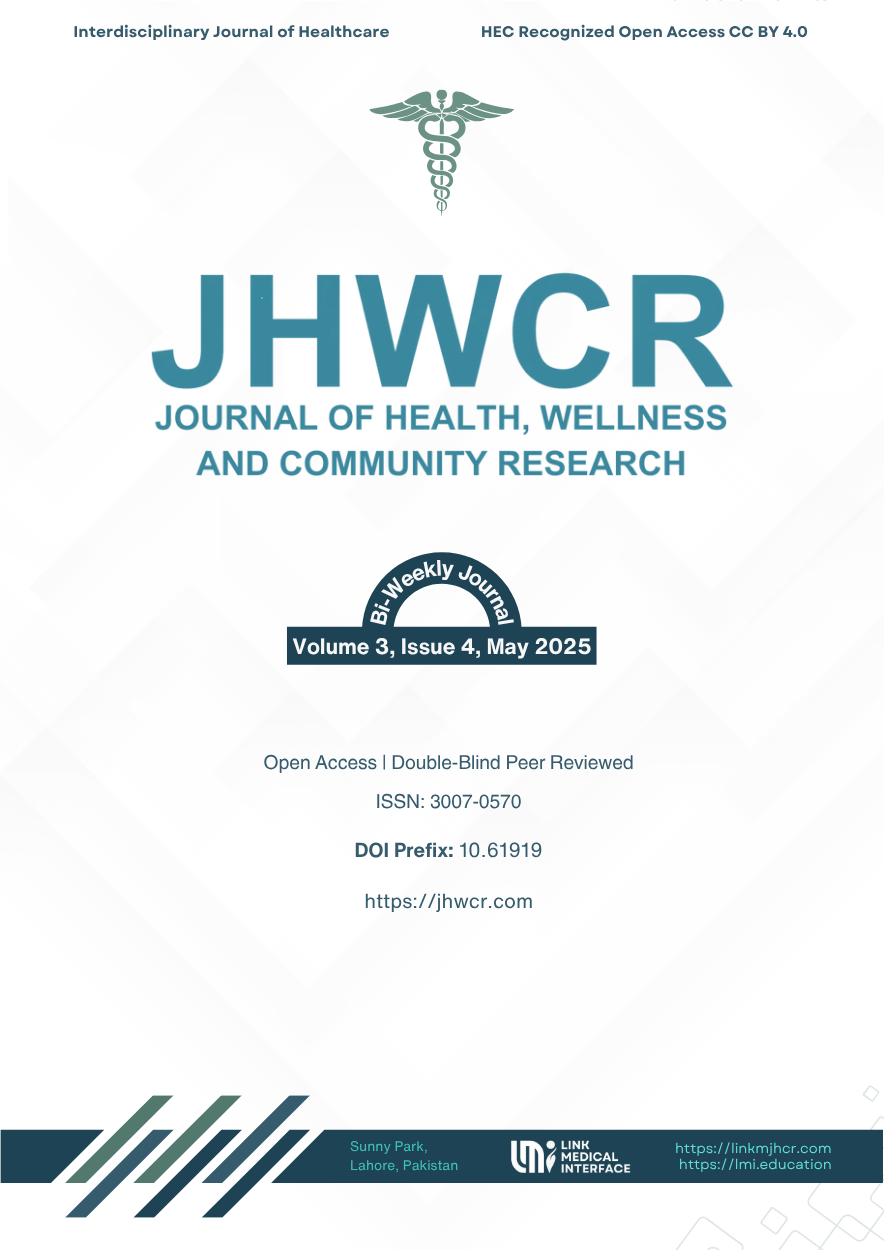Asthma Control Level as Measured by Fractional Exhaled Nitric Oxide (FeNO) in Patients Coming for Follow-Up
DOI:
https://doi.org/10.61919/0vbb4y84Keywords:
Asthma, Fractional Exhaled Nitric Oxide, Airway Inflammation, Asthma Control, Biomarkers, Pulmonary Function, Inhaled Corticosteroids.Abstract
Background: Asthma is a chronic inflammatory airway disease requiring regular monitoring to prevent exacerbation. Conventional clinical assessments may not fully capture airway inflammation, highlighting a need for reliable biomarkers. Fractional exhaled nitric oxide (FeNO) is a non-invasive marker reflecting eosinophilic airway inflammation and may improve asthma control evaluation. Objective: This study aimed to assess asthma control levels in follow-up patients by measuring FeNO and to evaluate the correlation between FeNO values and asthma control status classified according to Global Initiative for Asthma (GINA) guidelines. Methods: A descriptive observational study was conducted on 100 adult asthma patients aged 18–60 years attending follow-up at a tertiary care center. Patients with recent respiratory infections or corticosteroid use were excluded. FeNO levels were measured using a standardized electrochemical analyzer following ATS guidelines. Asthma control was classified per GINA 2022 criteria. Data were analyzed using SPSS version 24.0 with ANOVA to compare mean FeNO across control groups. Ethical approval was obtained, and the study adhered to the Declaration of Helsinki. Results: The mean age was 35.4 ± 10.2 years; 58% were female. Asthma control distribution was 40% controlled, 35% partially controlled, and 25% uncontrolled. Mean FeNO significantly increased with worsening control: 15.2 ± 5.3 ppb (controlled), 34.8 ± 8.7 ppb (partially controlled), and 51.3 ± 12.1 ppb (uncontrolled) (p < 0.001). Higher FeNO levels were strongly associated with poorer asthma control. Conclusion: FeNO measurement effectively distinguishes asthma control levels in follow-up patients, offering a valuable tool for detecting airway inflammation and guiding treatment adjustments. Incorporation of FeNO into routine asthma management can enhance individualized care and improve clinical outcomes.
Downloads
Published
Issue
Section
License
Copyright (c) 2025 Zarak Khan, Kaleemullah Kakar, Gul Habib, Shahzada Dawood Ahmed Babar, Muhammad Afzal, Sara Jafar (Author)

This work is licensed under a Creative Commons Attribution 4.0 International License.


